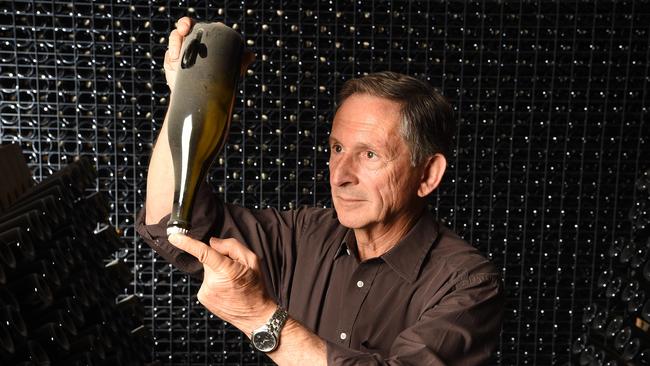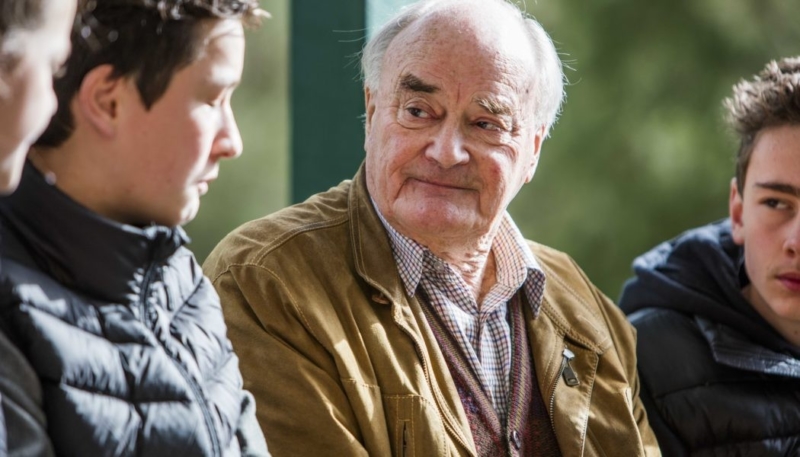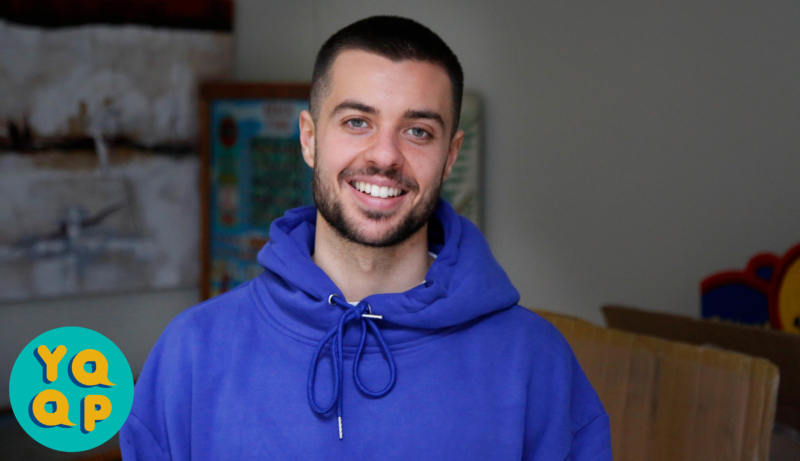Dr Tony Jordan OAM
Tony Jordan was born in Perth on 28 May, 1944. When he was seven his family moved to Melbourne, where he was educated at Caulfield Grammar School from 1956 to 1961. He passed the matriculation examination in 1961, gaining first class honours in physics and chemistry, and second class honours in pure mathematics and calculus.
After leaving Caulfield, Tony gained a Bachelor of Science degree (with first class honours) from the University of Sydney and then worked for a short time as a research scientist in the USA. He was awarded a PhD in physical chemistry in 1970. After postdoctoral work at University College, London, he took up a lectureship in wine science at Riverina College in Wagga Wagga, NSW, later part of Charles Sturt University. Having developed the college’s oenology course, he left in 1978 to start a consultancy business, Oenotec.
Tony was best known for his role as Chief Executive of the Australian arm of Domaine Chandon. The champagne house of Moët & Chandon at Epernay, France, had first taken its brand and expertise abroad to Argentina and California as Domaine Chandon in the 1980s and, in 1985, Tony, then an independent consultant, was asked to help find a suitable vineyard for the company in Australia. He identified a former dairy farm at Coldstream in Yarra Valley, Victoria, as having the ideal soil and climate, and was appointed Managing Director of the project in 1987.
In addition to being Managing Director/Winemaker for Domaine Chandon’s Australian operation from 1987 until his retirement in in 2008, he was Chief Executive of Moët Hennessy’s wineries at Cape Mentelle in Western Australia and Cloudy Bay in New Zealand from 2002 to 2008. He was also Technical Director Winemaking for Moët Hennessy in Argentina, California, Spain, France, New Zealand and Australia from the 1990s to early 2000s.
After his official retirement from Moët Hennessy, Tony re-established Oenotec in 2008 and was re-engaged by the French company the following year to survey existing and potential areas for viticulture in China. He assisted the company in its search for opportunities to produce both a high-quality sparkling wine and a red that might stand comparison with the best of Bordeaux and the Napa Valley.
Applying scientific analysis of weather and soil in successive visits, Tony decided against areas where other producers were already engaged, and looked instead at promising locations such as Ningxia in north-west China, and the mountainous areas of Sichuan and Yunnan in the south-west.
Ningxia already had local winemaking expertise and it was there in 2011 that Chandon China’s sparkling wine operation was established, with the first product being launched in 2014. In 2009, Tony had made a treacherous journey to the Deqin area of northern Yunnan, in the Himalayan foothills on the Tibet-Myanmar border, where, to his surprise, he found Cabernet Sauvignon and Cabernet Franc vines planted by 19th century French missionaries. At an altitude of 2200 metres, the dry, cool climate, conditions were comparable to Bordeaux and other good Cabernet areas of the world. Some 30 hectares of vines were leased and the Ao Yun (meaning “flying above the clouds”) winery was created; its first red wine being released in 2016.
Through this venture Tony developed a keen interest in Tibetan culture and became a well-known figure in the locality. He also relished exploring India, and played a key role in establishing Chandon’s winery at Nashik in Maharashtra province, which commenced production in 2014.
In his later years Tony established his own Yarra Valley winery, Spear Gully, and consulted on other wine projects in Australia, New Zealand and the UK. He became a Board member of Wine Australia in 2008 and was President of the Yarra Valley Wine Growers Association from 2008 to 2010. He was also President of the Australian Society of Viticulture and Oenology in the 1980s and well-known as a judge at wine shows in Australia and other parts of the world. He was Chairman of Judges at both the Perth Royal and Royal Hobart Wine Shows.
Tony was awarded and OAM in the 2013 Australia Day Honours “for service to the Australian wine industry as a wine maker, administrator and judge”. He died on 27 August 2019 after being diagnosed with mesothelioma the previous Easter. He is survived by his second wife, Michele, and three children from a previous marriage. In addition to his work, Tony enjoyed walking, gardening, golf and chair-making.
Prior to his death, Tony was honoured with life membership of the Australian Wine Industry by Australian Grape & Wine, in recognition of his significant contribution to the Australian wine sector. He was also made a Fellow of the Australian Society for Viticulture and Oenology. In 2019 Wine Australia created the Dr Tony Jordan OAM Award, an annual prize for the most outstanding Wine Australia PhD scholarship applicant, providing up to $40,000 annually to support their study.
Tony Jordan was born in Perth on 28 May, 1944. When he was seven his family moved to Melbourne, where he was educated at Caulfield Grammar School from 1956 to 1961. He passed the matriculation examination in 1961, gaining first class honours in physics and chemistry, and second class honours in pure mathematics and calculus.
After leaving Caulfield, Tony gained a Bachelor of Science degree (with first class honours) from the University of Sydney and then worked for a short time as a research scientist in the USA. He was awarded a PhD in physical chemistry in 1970. After postdoctoral work at University College, London, he took up a lectureship in wine science at Riverina College in Wagga Wagga, NSW, later part of Charles Sturt University. Having developed the college’s oenology course, he left in 1978 to start a consultancy business, Oenotec.
Tony was best known for his role as Chief Executive of the Australian arm of Domaine Chandon. The champagne house of Moët & Chandon at Epernay, France, had first taken its brand and expertise abroad to Argentina and California as Domaine Chandon in the 1980s and, in 1985, Tony, then an independent consultant, was asked to help find a suitable vineyard for the company in Australia. He identified a former dairy farm at Coldstream in Yarra Valley, Victoria, as having the ideal soil and climate, and was appointed Managing Director of the project in 1987.
In addition to being Managing Director/Winemaker for Domaine Chandon’s Australian operation from 1987 until his retirement in in 2008, he was Chief Executive of Moët Hennessy’s wineries at Cape Mentelle in Western Australia and Cloudy Bay in New Zealand from 2002 to 2008. He was also Technical Director Winemaking for Moët Hennessy in Argentina, California, Spain, France, New Zealand and Australia from the 1990s to early 2000s.
After his official retirement from Moët Hennessy, Tony re-established Oenotec in 2008 and was re-engaged by the French company the following year to survey existing and potential areas for viticulture in China. He assisted the company in its search for opportunities to produce both a high-quality sparkling wine and a red that might stand comparison with the best of Bordeaux and the Napa Valley.
Applying scientific analysis of weather and soil in successive visits, Tony decided against areas where other producers were already engaged, and looked instead at promising locations such as Ningxia in north-west China, and the mountainous areas of Sichuan and Yunnan in the south-west.
Ningxia already had local winemaking expertise and it was there in 2011 that Chandon China’s sparkling wine operation was established, with the first product being launched in 2014. In 2009, Tony had made a treacherous journey to the Deqin area of northern Yunnan, in the Himalayan foothills on the Tibet-Myanmar border, where, to his surprise, he found Cabernet Sauvignon and Cabernet Franc vines planted by 19th century French missionaries. At an altitude of 2200 metres, the dry, cool climate, conditions were comparable to Bordeaux and other good Cabernet areas of the world. Some 30 hectares of vines were leased and the Ao Yun (meaning “flying above the clouds”) winery was created; its first red wine being released in 2016.
Through this venture Tony developed a keen interest in Tibetan culture and became a well-known figure in the locality. He also relished exploring India, and played a key role in establishing Chandon’s winery at Nashik in Maharashtra province, which commenced production in 2014.
In his later years Tony established his own Yarra Valley winery, Spear Gully, and consulted on other wine projects in Australia, New Zealand and the UK. He became a Board member of Wine Australia in 2008 and was President of the Yarra Valley Wine Growers Association from 2008 to 2010. He was also President of the Australian Society of Viticulture and Oenology in the 1980s and well-known as a judge at wine shows in Australia and other parts of the world. He was Chairman of Judges at both the Perth Royal and Royal Hobart Wine Shows.
Tony was awarded and OAM in the 2013 Australia Day Honours “for service to the Australian wine industry as a wine maker, administrator and judge”. He died on 27 August 2019 after being diagnosed with mesothelioma the previous Easter. He is survived by his second wife, Michele, and three children from a previous marriage. In addition to his work, Tony enjoyed walking, gardening, golf and chair-making.
Prior to his death, Tony was honoured with life membership of the Australian Wine Industry by Australian Grape & Wine, in recognition of his significant contribution to the Australian wine sector. He was also made a Fellow of the Australian Society for Viticulture and Oenology. In 2019 Wine Australia created the Dr Tony Jordan OAM Award, an annual prize for the most outstanding Wine Australia PhD scholarship applicant, providing up to $40,000 annually to support their study.




